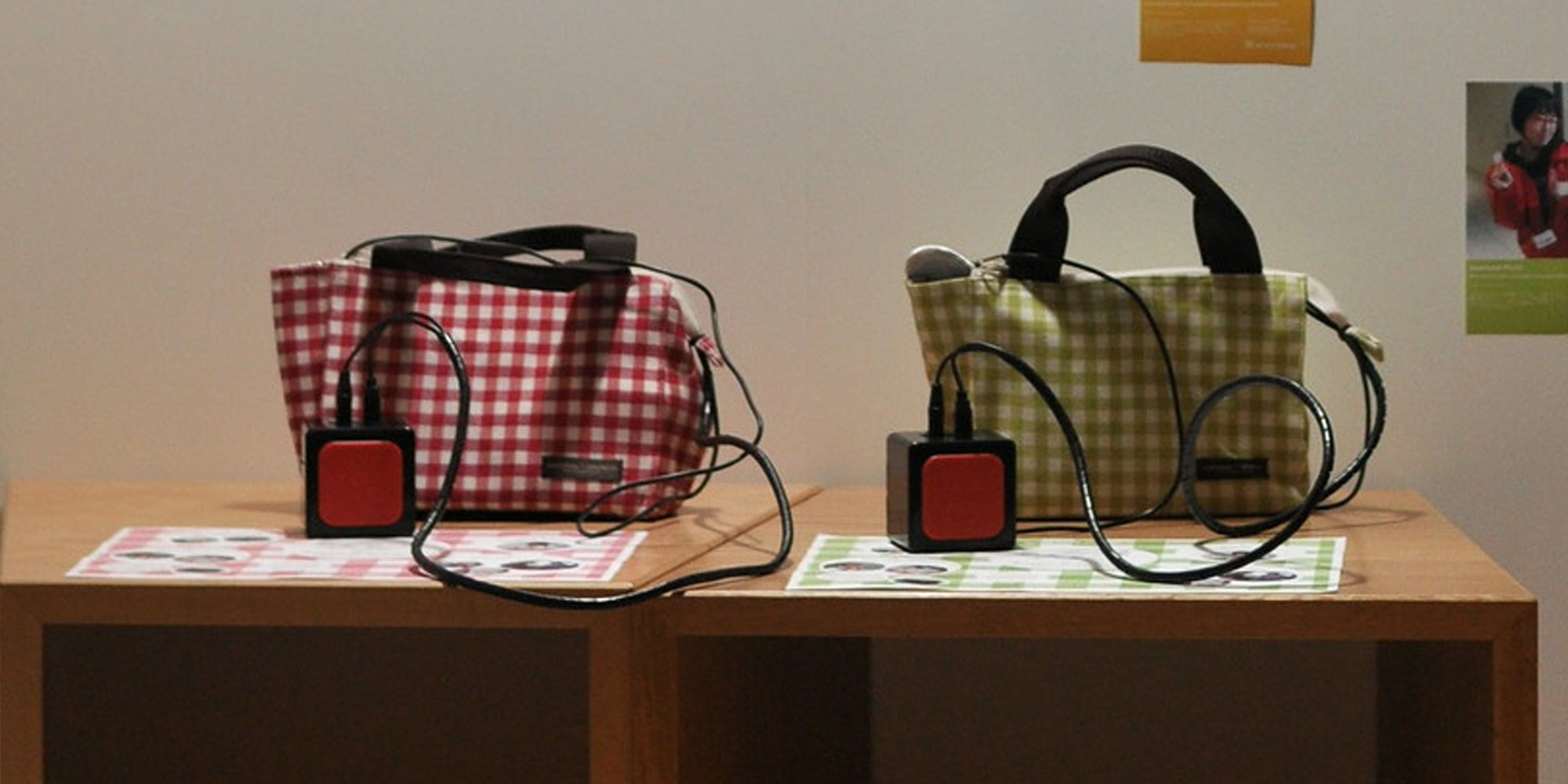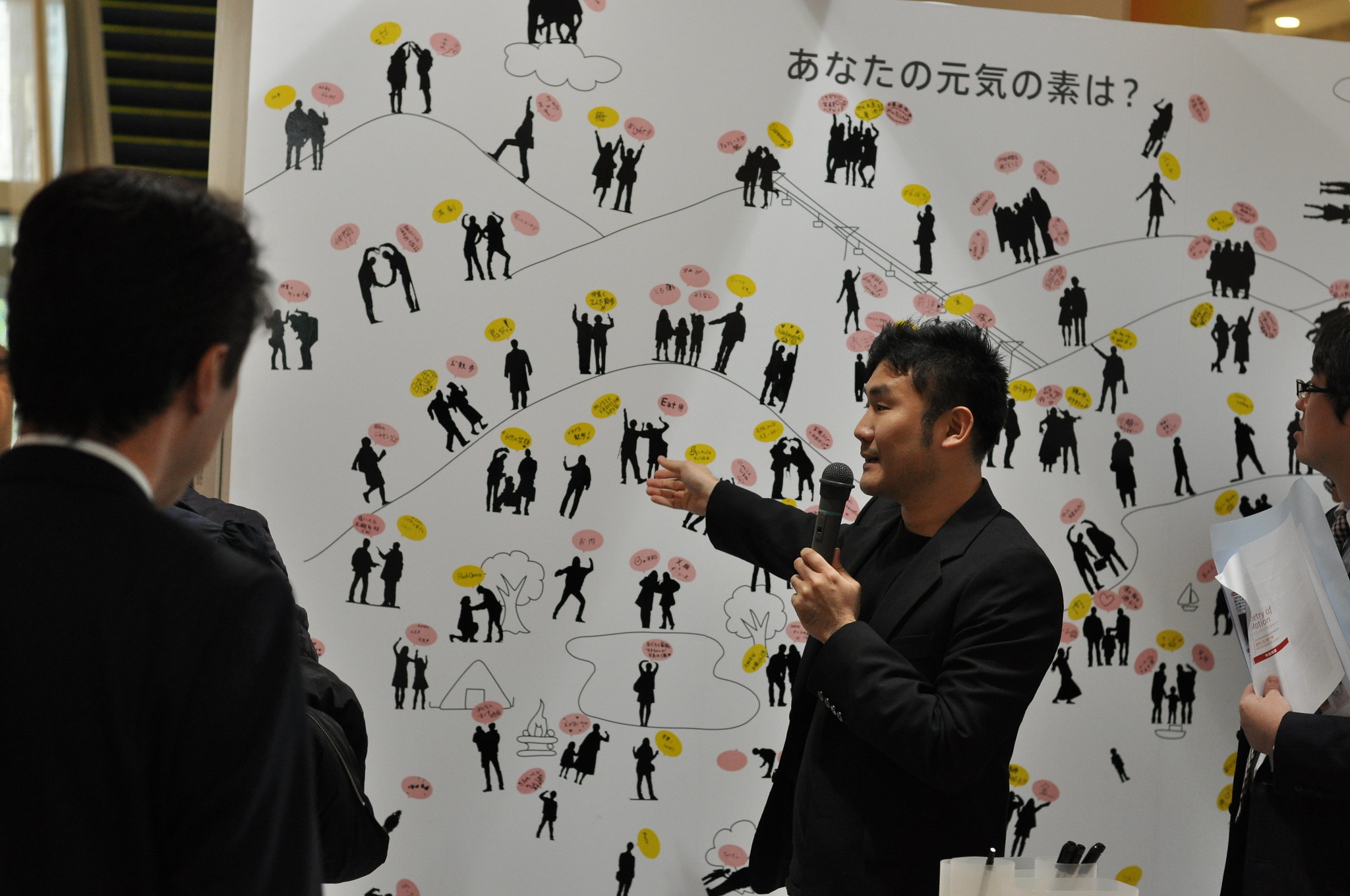“Poetry of Motion” is Ars Electronica’s latest showcase of excellence in media art. It runs December 10-18, 2011 in Osaka, Japan. The BREEZÉ BREEZÉ Mall and the shoppers who frequent it will be part of an experiment in which Ars Electronica stages six selected artistic approaches to examining how media art can enrich the flow of everyday life. This project was initiated by Kansai Telecasting Corporation and is being produced with the support of the Austrian Cultural Forum in Tokyo.
Type: Exhibition
Duration: 10.12. – 18.12.2011
City, Country: Osaka, Japan
Venue: BREEZÉ BREEZÉ Shoppingmall Osaka, Japan

This exhibition focuses on the theme of the poetry we find hidden in motion. We live in the “moving world”. Rhythmic movements of simple dresses, words and action against the social, everyday scenery, your motion of walking and pulse… Artists express various motions with unique viewpoints. It’s not that which you can read, but that which you can feel. Gather your feelings from the art works and complete the exhibition in your brain. Have an experience of poetry “now”!
Artworks
Ursula Neugebauer
tour en l’air (1998)

tour en l’air“tour en l’air” means “Turn in the air” a term from the art of ballet. One after the other, the floor-length red gowns begin to rotate. They spin so fast that the skirts start to puff out and look as if they are worn by a human dancer. These torsos rotate incessantly in a trance until suddenly, as if by silent command, they cease and become still again. The ears hear the fabric vibrating through the air with the ‘taffeta-sound’, and the silence after the cessation of rotation.
João Wilbert (FABRICA)
Exquisite Clock (2009)

“Numbers are everywhere – if you care to see them.” Exquisite Clock is a clock made of numbers taken from everyday life – seen, captured and uploaded by people from all over the world. The project is based on the idea that time is non-linear and is everywhere shared simultaneously. Exquisite Clock shows the different aspect of time although everyone should know. If you find a “number”, you can post it from here:
Junji Watanabe, Yui Kawaguchi, Kyosuke Sakakura, Hideyuki Ando
Heartbeat Picnic (2010)

Through this artwork, you can „touch“ your heart beat. The heartbeat sound taken by the stethoscope is sent to the black cube using a vibrating speaker, the system enables you to copy your own heartbeat to the black cube. The black cube vibrates in your palm. How can you change the sound, and with what kind of movement? How do you feel if you exchange your black cube with others? The feeling of your heartbeat is made more tangible, a rhythm beating outside our daily consciousness, even though it is so close.
Roland Haring, Hideaki Ogawa, Christopher Lindinger, Emiko Ogawa, Matthew Gardiner and David Stolarsky: Ars Electronica Futurelab
Shadowgram (2010)

“Shadowgram” prints shadow of visitor’s silhouette out as a miniature sticker. There is a big illustration board which shows the world. Add your silhouette shadow sticker and your comment on it. The theme is “What is your vitality?”. The particular body language of the silhouette, a speech balloon containing a brief statement, and the respective thematic cluster coalesce into a message. Shadowgram is a participative artwork using shadows that enable the individual and society to form collective messages.
Katharina Nussbaumer, Hideaki Ogawa, Andreas Jalsovec, Christoph Liebmann, Erwin Reitböck, Michael Mayr, Stefan Hehr: Ars Electronica Futurelab
Innocence (2010)

“Innocence” transforms everyday world into fairy-tale landscape silently, at the Airport, shopping mall, a corridor through which people pass by. A camera captures people on the go, and in real time on the installation’s monitors they are amid a fairy-tale landscape. Depending on how fast these people are walking, they churn up (more or fewer) fallen leaves, and either scare the animals or cause them to come closer. The scenery adaptively includes those who try to interact with the artwork and those who just pass by.
Hideaki Ogawa, Emiko Ogawa and Manuela Naveau: Ars Electronica
Ars Wild Card (2011)

Ars Wild Card is a new information system (iPhone App) to enable visitors to enjoy exhibitions in public spaces. Using the app, visitors can capture a QR code beside each work and access a frame that reveals information about the work. Within this frame the visitor can photograph the work, including themselves, friends and family to record their experience of the work. The photos are stored on their iPhone and can be shared to a cloud service and optionally shared via social media networks. Visitors can also use a printing service in the exhibition. Ars Wild Card dynamically generates a photographic archive of visitors’ daily interactions and experiences of the art works.
